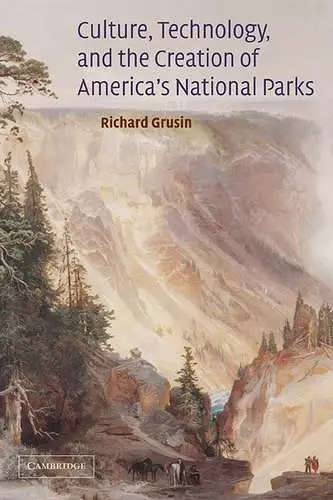Culture, Technology, and the Creation of America's National Parks
Format:Paperback
Publisher:Cambridge University Press
Published:18th Sep '08
Currently unavailable, and unfortunately no date known when it will be back
This paperback is available in another edition too:
- Hardback£90.00(9780521826495)

Grusin investigates how the establishment of national parks participated in the production of American national identity after the Civil War.
Richard Grusin's study investigates how the establishment of national parks participated in the production of American national identity after the Civil War. The creation of America's national parks is usually seen as an uncomplicated act of environmental preservation. Grusin argues, instead, that parks must be understood as complex cultural technologies for the reproduction of nature as landscape art. He explores the origins of America's three major parks - Yosemite, Yellowstone and Grand Canyon - in relation to other forms of landscape representation in the late nineteenth century. He examines such forms as photography, painting, and mapping, plus a wide range of travel narratives, scientific and nature writing, and fiction. Grusin shows that while establishing a national park does involve preserving an area of land as a 'natural' rather than economic asset, a ranch or mine for instance, it also transforms the landscape into a culturally constructed object called 'nature'.
"The evidence (Grusin) invokes is fascinating, and serves to freshly illuminate the cultural landscape from which our first national parks emerged. Recommended." M.A. Olshan, Alfred University, CHOICE
"Grusin presents historians with a fresh outlook on the parks that will inspire further creative efforts." - James Pritchard, Iowa State University
ISBN: 9780521081689
Dimensions: 229mm x 152mm x 19mm
Weight: 360g
240 pages